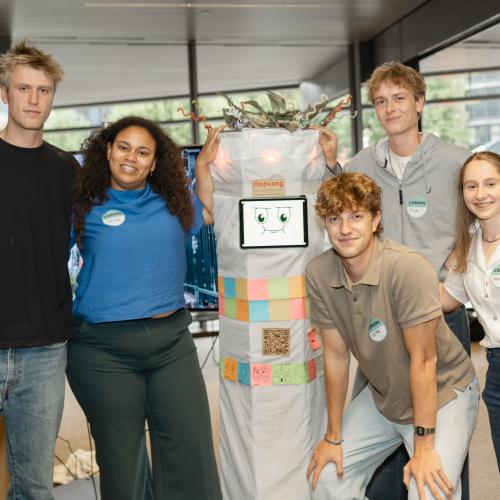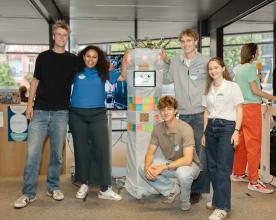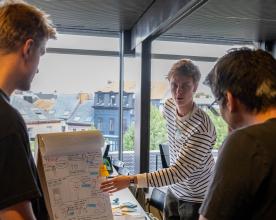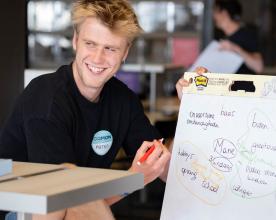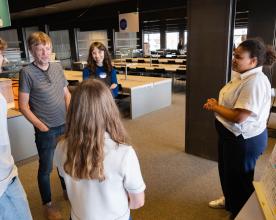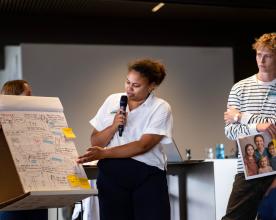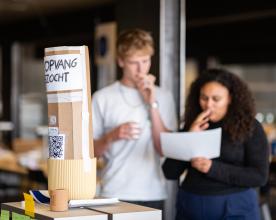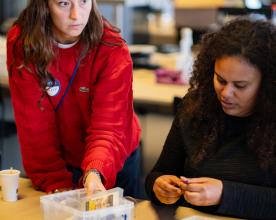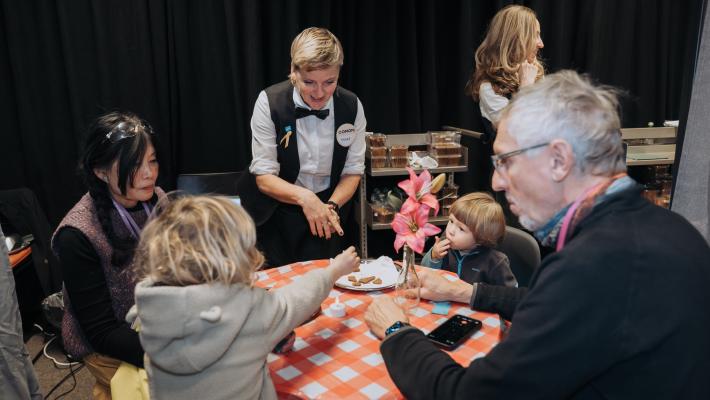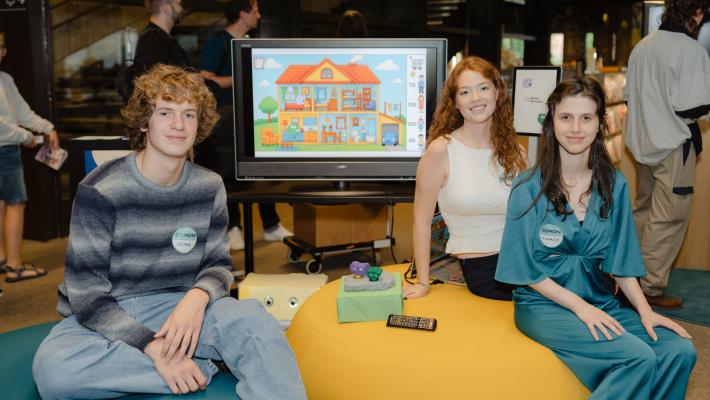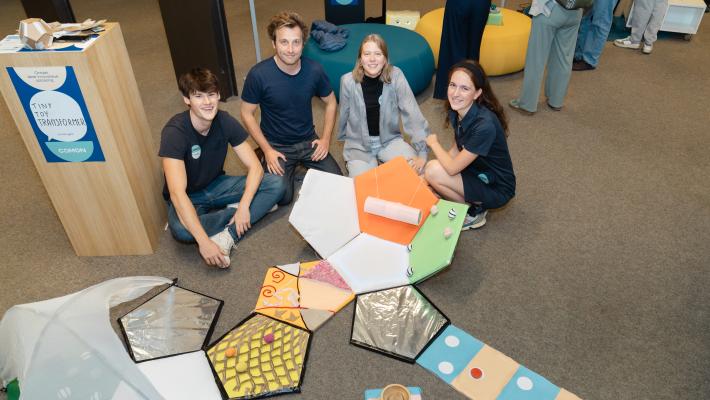Hopvang: a neighborhood childcare community
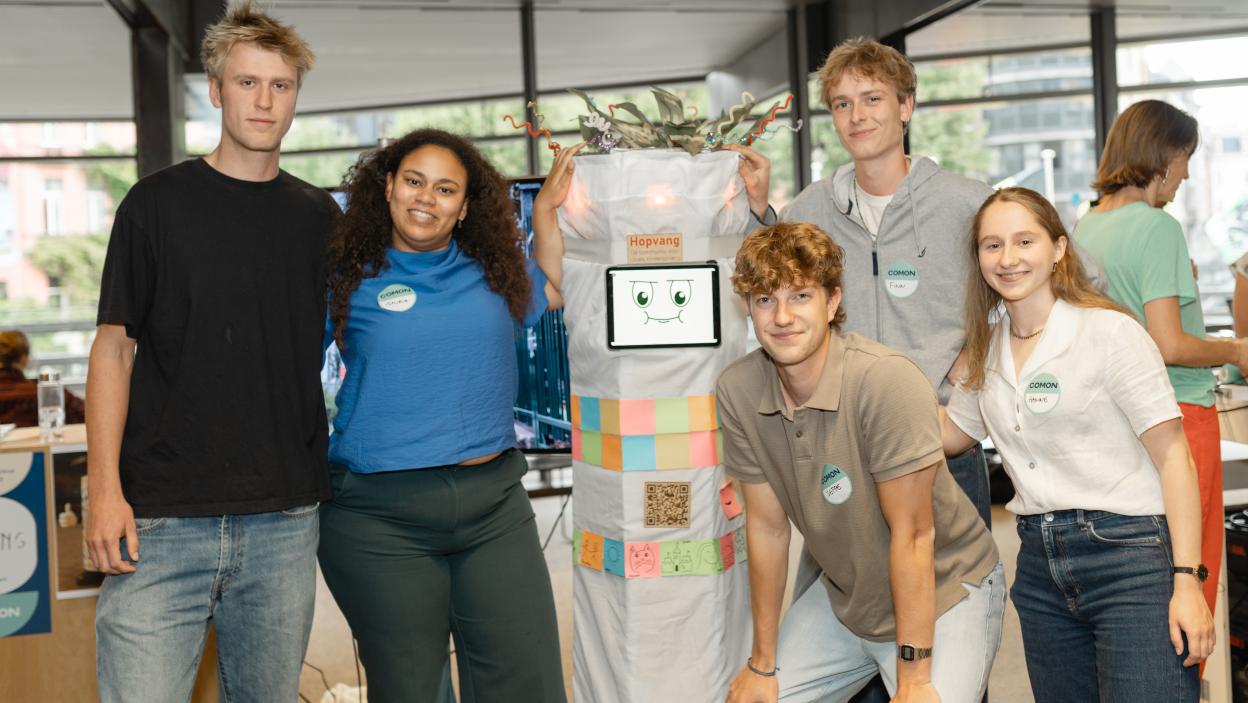
During the Make-a-Ton, students from different fields of study joined forces to come up with ways to empower parents in raising their children. Hopvang emerged as one of the innovative solutions: a local childcare community that connects parents in need of care with neighbors who want to offer it voluntarily. Discover Hopvang and meet Mathis, Finn, Isaura, Seppe, and Hanne, the creative minds behind this invention.
What challenge does Hopvang aim to address?
"How can we better support parents in arranging flexible, affordable, and simple (last-minute) childcare, leisure activities, and holiday options for their children by matching needs with available care?" This was the challenge posed by Tom Dillen from Samen1Plan, together with Groeiteam & Huis van het Kind, to the team of Mathis, Finn, Isaura, Seppe, and Hanne.
Many parents struggle to find childcare, especially when it's needed unexpectedly. In those moments, they often feel stuck because they don't know who to turn to or have only a small network. This invention connects parents looking for childcare with people in their neighborhood who want to help them out (for free).
How does Hopvang work?
Hopvang is a community for childcare within your own neighborhood that connects parents in need of care with neighbors who want to offer it voluntarily. The platform is entirely social and non-commercial: people help each other for free. This way, we strengthen the neighborhood, encourage solidarity, and make sure parents can count on support, even for last-minute childcare needs.
As a parent, you create a profile on the digital platform and link it to your own network (through contacts, Facebook or WhatsApp). From there, you can expand your network with neighbors or mutual connections. Every profile is verified in advance. Need childcare? Simply post a request within your own network or to local volunteers. As a parent, you choose who receives your request and which offer you accept. Volunteers can, in turn, choose to receive notifications and respond to requests from nearby families.
A key feature is the community marker: a visible landmark in the area, for example, next to a school or on a playground. The marker includes a QR code that links directly to the platform, a screen showing current requests, and a counter that displays how many children have already been "hopvanged". When there is a childcare need, red lights turn on, and once help is found, they switch to green. This makes solidarity literally visible in public spaces. The totem can also move to neighborhood events or play and meet-up moments, where parents can get to know each other and expand their networks.
Hopvang is built on social support and strengthens both existing networks (bonding) and new connections (bridging). In addition, a staff member can help parents create a profile or navigate the community. This makes Hopvang more than just a childcare solution; it is a way to strengthen the connection between parents and their neighborhood.
The minds behind Hopvang

Smart solutions require smart thinkers. Meet the three whizz students who came up with Hopvang:
-
Seppe, a business engineering student at Ghent University
-
Mathis, an industrial design student at Ghent University
-
Isaura, a social work student at Ghent University
-
Finn, an industrial design student at Ghent University
-
Hanne, an educational sciences student at Ghent University
Discover all the solutions that came out of the Make-a-Ton
Also, a shout-out to all the other students. Together, they created prototypes to help people raise their children with confidence. From ‘Folia,’ a tree that brings your community into your living space, to ‘TinyToyTransformers,’ a mobile playground for children aged 0 to 3. Please note that these solutions are only ideas converted into an initial prototype for testing. They are not (yet) available for use. In the next phase, Comon brings partners together in a 'Microlab'. There, a diverse team of people from Ghent will work on further developing, testing, and implementing one of the solutions from the Make-a-Ton into a fully functioning prototype.
